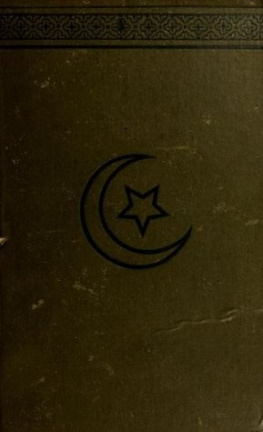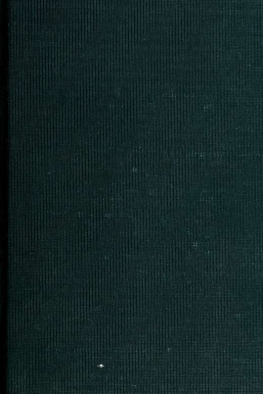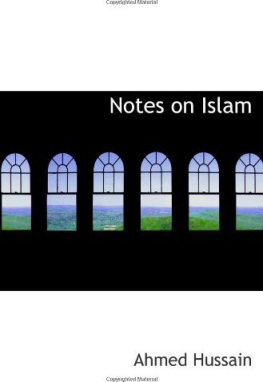The Project Gutenberg EBook of The Tinguian, by Fay-Cooper Cole
This eBook is for the use of anyone anywhere at no cost and with
almost no restrictions whatsoever. You may copy it, give it away or
re-use it under the terms of the Project Gutenberg License included
with this eBook or online at www.gutenberg.net
Title: The Tinguian
Social, Religious, and Economic Life of a Philippine Tribe
Author: Fay-Cooper Cole
Release Date: July 8, 2004 [EBook #12849]
Language: English
*** START OF THIS PROJECT GUTENBERG EBOOK THE TINGUIAN ***
Produced by Jeroen Hellingman and the Distributed Proofreaders Team
The Tinguian
Social, Religious, and Economic Life of a Philippine Tribe
By
Fay-Cooper Cole
Assistant Curator of Malayan Ethnology
1922
Contents
- List of Illustrations 231
- Introduction 235
- I. Geographical Relations and History 238
- II. Physical Type and Relationships 247
- III. The Cycle of Life 261
- Birth 261
- Childhood 272
- Engagement and Marriage 278
- Death and Burial 283
- The Layog 290
- IV. Religion and Magic 295
- V. The Ceremonies 315
- 1. The Minor Ceremonies 315
- 2. The Great Ceremonies 327
- 3. Special Ceremonies 355
- VI. Social Organization. Government. The Village 359
- VII. Warfare, Hunting, and Fishing 371
- VIII. Economic Life 387
- Rice Culture 387
- Cultivated Plants and Trees 403
- Wild Plants and Trees 408
- Plants and Trees Used in the Treatment of Disease 409
- Use of Betel-Nut, Tobacco, and Stimulants 410
- Domestic Animals 411
- IX. Products of Industry 413
- Iron-Working 413
- Spinning and Weaving 416
- Manufacture of Rope and String 420
- Bark Cloth 422
- Basket Making 423
- Mats 426
- Dyes 426
- Net Making 427
- Manufacture of Pottery 427
- Pipe Making 428
- Method of Drying Hides 429
- X. Decorative Art 431
- XI. Personal Adornment, Dances, and Musical Instruments 437
- XII. Music, By Albert Gale 443
- Conclusions 486
- Index 491
List of Illustrations
Text-Figures
- 1. Child's Cradle and Jumper
- 2. Diagram of a Game
- 3. Cross Sections Showing Types of Graves
- 4. Ceremonial Paraphernalia
- 5. Household Objects
- 6. Spoons and Ladles
- 7. Types of Knives
- 8. Head-axes
- 9. Spears
- 10. Shields
- 11. Chicken Snare
- 12. Bird Snares
- 13. Fishing Devices
- 14. Grass Knife; Root Adze; Rice Cutter
- 15. Agricultural Implements
- 16. Devices Used in Spinning and Weaving
- 17. Rope-Making Appliances
- 18. Bark Beater
- 19. Basket Weaves
- 20. Net Needle and Mesh Stick
- 21. Tobacco-Pipes
- 22. Designs on Pipes and Pottery
- 23. Decorative Designs
- 24. Patterns Used in Weaving
- 25. Blanket Designs
- 26. Musical Instruments
Plates
- Frontispiece: Map of Northwestern Luzon.
- I. The Province of Abra, Looking Inland from the Coast Range.
- II. Abra, Looking toward the Sea from the Top of the Cordillera Central.
- III. Manabo Man.
- IV. Man of Ba-ak.
- V. Manabo Woman.
- VI. Woman of Patok.
- VII. A Mountain Tinguian from Likuan.
- VIII. A Young Man from Likuan.
- IX. Girl from the Mountain Village of Lamaw (Photograph from Philippine Bureau of Science).
- X. A Woman from Lamaw (Photograph from Philippine Bureau of Science).
- XI. A Typical Small Boy (Photograph from Philippine Bureau of Science).
- XII. The Baby Tender.
- XIII. A Betrothed Maiden.
- XIV. The Wedding.
- XV. Mothers and Babies.
- XVI. Funeral of Malakay.
- XVII. The Whipping at a Funeral.
- XVIII. Inapapaiag. An Offering to the Spirits.
- XIX. The Medium's Outfit.
- XX. Ceremonial Houses.
- XXI. Balaua. The Greatest of the Spirit Structures.
- XXII. Spirit Houses in a Garden.
- XXIII. The Kalangan: A Spirit House; Second in Importance.
- XXIV. The Saloko. A Split Bamboo, in which Offerings are Placed. Ceremonies.
- XXV. The Saloko. A Spirit Bamboo, in which Offerings are Placed.
- XXVI. Ready to Launch the Spirit Raft on the River.
- XXVII. The Tangpap. An Important Spirit Structure.
- XXVIII. Gateway at Likuan.
- XXIX. Pottery Houses, for the Spirit of the Rice.
- XXX. A Medium Making an Offering to the Guardian Stones.
- XXXI. Ceremonial Pounding of the Rice.
- XXXII. Renewing the Offering on the Spirit Shield.
- XXXIII. Singeing a Pig at a Ceremony.
- XXXIV. Offering of the Pigs to the Spirits.
- XXXV. The Sayang Ceremony.
- XXXVI. Potters at Work.
- XXXVII. A Family of Laba-an.
- XXXVIII. The Village of Sallapadin.
- XXXIX. Typical Houses.
- XL. House Building.
- XLI. Roofing a House.
- XLII. Water Carriers (Photograph from Philippine Bureau of Science).
- XLIII. A Tinguian Housewife (Photograph from Philippine Bureau of Science).
- XLIV. A Warrior.
- XLV. Hunter Fitted for the Trail.
- XLVI. Hunting Party on Mt. Posoey.
- XLVII. Shooting the Blowgun.
- XLVIII. Highland Field and Terraces at Patok.
- XLIX. The Rice Terraces near Likuan.
- L. Plowing in the Lower Terraces.
- LI. Taking Rice Sprouts from the Seed Beds.
- LII. Transplanting the Rice.
- LIII. Bird Scarers in the Fields.
- LIV. Harvesting the Rice.
- LV. The Rice Granary.
- LVI. Pounding Rice (Photograph from Philippine Bureau of Science).
- LVII. Winnowing and Sifting (Photograph from Philippine Bureau of Science).
- LVIII. Drying Corn.
- LIX. Breaking the Corn between Two Stones.
- LX. Preparing Tobacco.
- LXI. Feeding the Pigs.
- LXII. A Typical Forge of the Iron Workers.
- LXIII. Ginning Cotton and Sizing the Thread.
- LXIV. Beating Cotton on a Carabao Hide.
- LXV. Spinning (Photograph from Philippine Bureau of Science).
- LXVI. Weaving a Blanket.
- LXVII. Basket Making.
- LXVIII. Basket Types.
- LXIX. Basket Types.
- LXX. The Net Maker.
- LXXI. Ceremonial Blanket.
- LXXII. Blankets Showing Designs.
- LXXIII. Blankets Showing Designs.
- LXXIV. Woven Belts and Clouts.
- LXXV. Men of Sallapadin.
- LXXVI. Typical Dress of the Man.
- LXXVII. Women in Full Dress.
- LXXVIII. Customary Dress of the Woman.
- LXXIX. Women's Arm Beads.
- LXXX. Woman Wearing Girdle and Clout (Photograph from Philippine Bureau of Science).
- LXXXI, 1. Dancing Tadek at a Ceremony.
- LXXXI, 2. Beating the Copper Gongs.
- LXXXII. The Nose Flute.
- LXXXIII. Playing on Bamboo Guitars.
Introduction
It seems desirable, at the outset, to set forth certain general conclusions regarding the Tinguian and their neighbors. Probably no pagan tribe of the Philippines has received more frequent notice in literature, or has been the subject of more theories regarding its origin, despite the fact that information concerning it has been exceedingly scanty, and careful observations on the language and physical types have been totally lacking.
According to various writers, these people are descended from Chinese, Japanese, or Arabs; are typical Malay; are identical with the Igorot; are pacific, hospitable, and industrious; are inveterate head-hunters, inhospitable, lazy, and dirty. The detailed discussion of these assertions will follow later in the volume, but at this point I wish to state briefly the racial and cultural situation, as I believe it to exist in northwestern Luzon.






